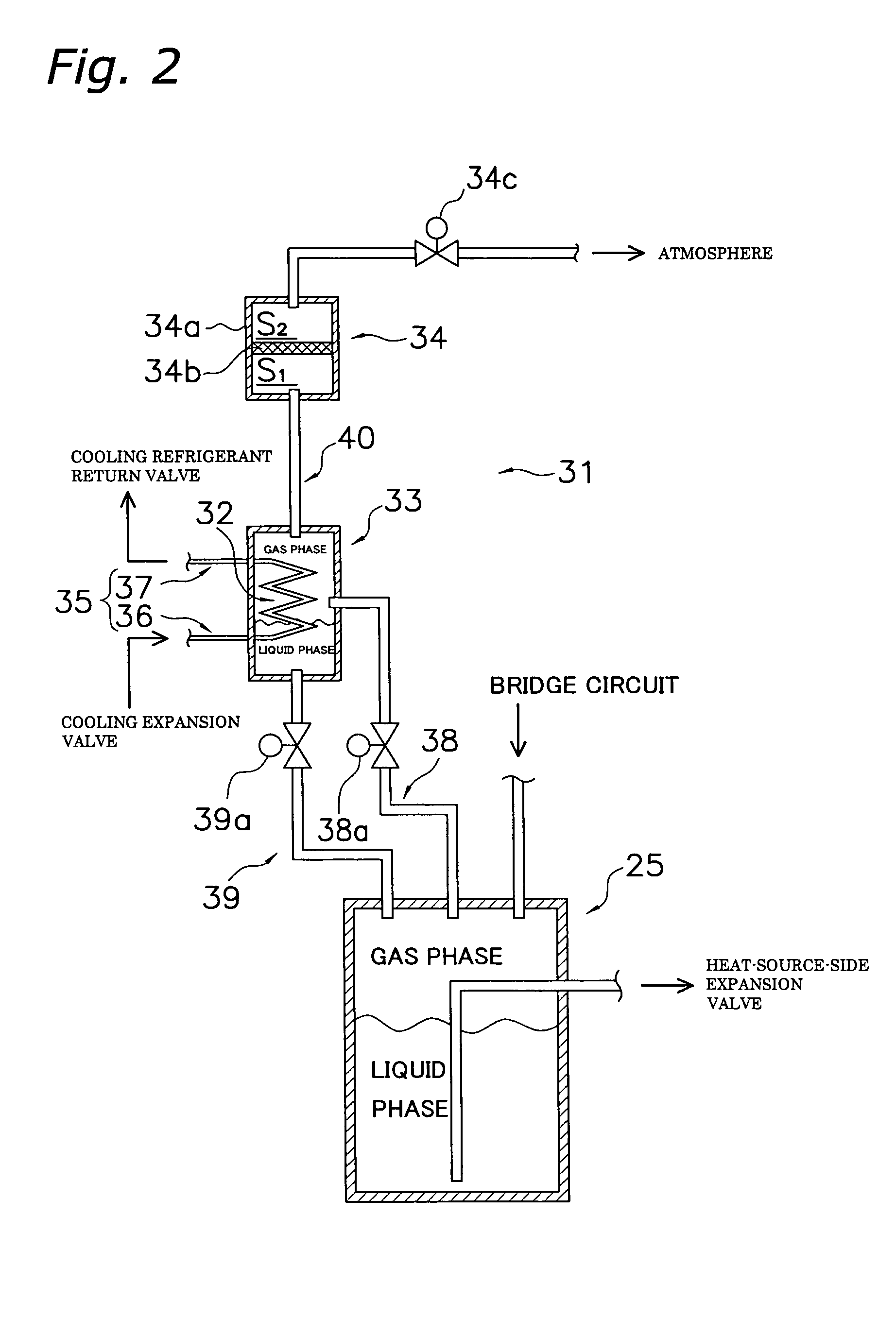Method for installing refrigeration device, and refrigeration device
a technology for installing refrigeration devices and refrigeration devices, which is applied in the direction of refrigeration machines, compression machines with reversible cycles, lighting and heating apparatus, etc. it can solve the problems of increasing the operating pressure due to non-condensable gases, atmospheric components, and the degradation of refrigerant, so as to reduce the number of separate components and simplify the structure of the device
- Summary
- Abstract
- Description
- Claims
- Application Information
AI Technical Summary
Benefits of technology
Problems solved by technology
Method used
Image
Examples
first embodiment
1 Structure of the Air Conditioning Device
[0066]FIG. 1 is a schematic diagram of a refrigerant circuit of an air conditioning device 1 as an example of a refrigeration device according to a first embodiment of the present invention. The air conditioning device 1 in the present embodiment is an air conditioning device capable of cooling operation and heating operation, and is provided with a heat source unit 2, a utilization unit 5, and a liquid refrigerant connection pipe 6 and gas refrigerant connection pipe 7 for connecting the heat source unit 2 with the utilization unit 5.
[0067]The utilization unit 5 mainly comprises a utilization-side heat exchanger 51.
[0068]The utilization-side heat exchanger 51 is a heat exchanger that is capable of cooling or heating the air inside a room by evaporating or condensing the refrigerant that flows therethrough.
[0069]The heat source unit 2 mainly comprises a compressor 21, a four-way directional valve 22, a heat-source-side heat exchanger 23, a b...
modification 4
7 Modification 4
[0117]In the abovementioned gas separation devices 31, 131, 231, and 331, the liquid refrigerant outflow circuit 39 for discharging to the outside of the secondary receiver 33 the liquid refrigerant condensed by the cooler 32 and collected in the bottom of the secondary receiver 33 is connected so as to return the liquid refrigerant to the main receiver 25. However, a liquid refrigerant outflow circuit 439 may also be provided so as to form a connection between the secondary receiver 33 and the downstream side of the heat-source side expansion valve 26 (specifically, between the downstream side of the heat-source side expansion valve 26 and the non-return valves 24c and 24d of the bridge circuit 24), as in the gas separation device 431 incorporated into the heat source unit 402 of the air conditioning device 401 of the present modification shown in FIG. 6.
modification 5
8 Modification 5
[0118]In the abovementioned gas separation devices 31, 131, 231, and 431, the secondary receiver 33 having the cooler 32 disposed in the interior thereof is connected to the separation membrane device 34 via the separation membrane introduction circuit 40. However, the separation membrane device 34 may also be integrally formed with the secondary receiver 33 having the cooler 32 disposed in the interior thereof, as in the gas separation device 531 incorporated into the heat source unit 502 of the air conditioning device 501 of the present modification shown in FIG. 7. The number of separate components constituting the gas separation device 531 is thereby reduced, and the structure of the device is simplified.
PUM
 Login to View More
Login to View More Abstract
Description
Claims
Application Information
 Login to View More
Login to View More - R&D
- Intellectual Property
- Life Sciences
- Materials
- Tech Scout
- Unparalleled Data Quality
- Higher Quality Content
- 60% Fewer Hallucinations
Browse by: Latest US Patents, China's latest patents, Technical Efficacy Thesaurus, Application Domain, Technology Topic, Popular Technical Reports.
© 2025 PatSnap. All rights reserved.Legal|Privacy policy|Modern Slavery Act Transparency Statement|Sitemap|About US| Contact US: help@patsnap.com



